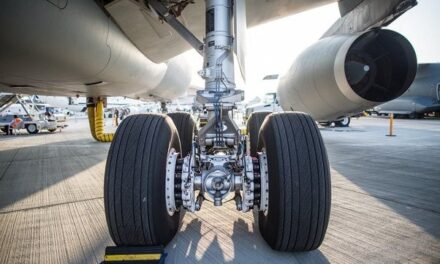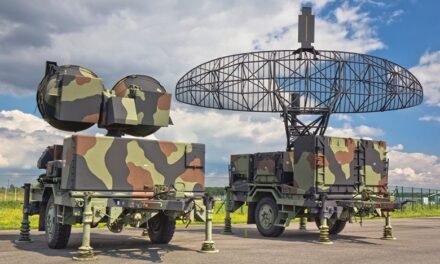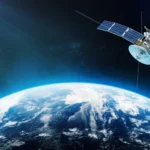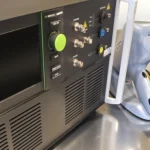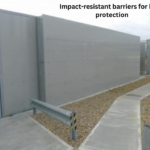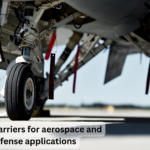Designing microwave circuits and components for extreme aerospace environments requires careful consideration of environmental factors such as temperature extremes, radiation, mechanical stress, and vacuum conditions. These components are essential for radar, satellite communications, electronic warfare (EW), and remote sensing applications. Below are key design considerations, materials, and techniques used to ensure high reliability and performance in aerospace applications.
1. Key Environmental Challenges in Aerospace Applications
Microwave circuits and components must be engineered to withstand:
- Extreme Temperatures: Space environments range from -150°C to +150°C, while atmospheric aerospace applications must endure high thermal cycling.
- Radiation Exposure: Satellites and deep-space probes face ionizing radiation, which can cause component degradation or failure.
- Vacuum Conditions: Outer space lacks atmospheric pressure, affecting heat dissipation and material outgassing.
- Vibration and Shock: Components must survive high-G forces, launch vibrations, and potential impact loads.
- EMI (Electromagnetic Interference): Circuits must be shielded from interference caused by cosmic radiation and other electronic devices.
2. Design Considerations for Aerospace Microwave Circuits
A. Selection of Materials
- Substrate Materials:
- Low-loss, high-stability materials like Rogers RT/Duroid, ceramic-based alumina (Al₂O₃), or quartz are used instead of standard PCB materials.
- GaAs (Gallium Arsenide) and GaN (Gallium Nitride) are common for active microwave components due to their high power efficiency and radiation hardness.
- Silicon carbide (SiC) and other wide-bandgap semiconductors enhance temperature resistance.
- Metallization:
- Gold (Au) or Platinum (Pt) plating is used to resist oxidation and corrosion in vacuum and high-temperature environments.
- Silver (Ag) is used in waveguides but must be protected from sulfide contamination.
- Dielectric Materials:
- Low-loss dielectrics such as PTFE composites, fused silica, and ceramics help maintain signal integrity at high frequencies.
B. Thermal Management
- Heat Dissipation: In space, heat cannot be dissipated through convection, so components rely on radiation and conduction through heat sinks.
- Thermal Expansion Matching: CTE (Coefficient of Thermal Expansion) mismatches between materials must be minimized to prevent structural stress and microfractures.
C. RF/Microwave Design Techniques
- Impedance Matching: Aerospace components must operate over a wide frequency range while minimizing signal loss.
- Shielding & Grounding: To prevent EMI, microwave circuits use metal enclosures, waveguides, and Faraday cages.
- Miniaturization: To reduce weight and footprint, monolithic microwave integrated circuits (MMICs) are used instead of bulky discrete components.
D. Reliability Enhancements
- Redundant Circuitry: To prevent mission failure, aerospace microwave systems often use redundant RF paths.
- Hermetic Sealing: Components are enclosed in hermetic metal or ceramic packages to prevent moisture and gas intrusion.
- Radiation Hardening: Using radiation-tolerant semiconductors, shielding, and error-correcting designs to mitigate single-event effects (SEEs).
3. Key Microwave Components for Aerospace
A. RF/Microwave Amplifiers
- Low Noise Amplifiers (LNAs): Used in satellite communication and radar systems to amplify weak signals with minimal noise.
- Power Amplifiers (PAs): GaN-based PAs are favored for high-power transmission due to their efficiency and thermal stability.
B. Microwave Filters & Duplexers
- Cavity Filters & Waveguide Filters: Provide high-Q factor filtering for radar and communication bands.
- Dielectric Resonator Filters: Used in low-phase-noise oscillators for precise signal processing.
C. Microwave Oscillators & Synthesizers
- Voltage-Controlled Oscillators (VCOs): Generate stable microwave frequencies for radar and telemetry.
- Frequency Synthesizers: Ensure precise frequency generation in GNSS, satellite communication, and phased array radars.
D. Phased Array Antennas & Beamforming Networks
- Active Electronically Scanned Arrays (AESAs): Utilize microwave circuits for dynamic beam steering in defense and space applications.
4. Aerospace Standards & Testing for Microwave Components
To ensure survivability and performance, aerospace microwave components must meet stringent standards, including:
- MIL-STD-883 (Testing for microelectronics in space and defense)
- MIL-STD-810 (Environmental testing for aerospace hardware)
- NASA EEE-INST-002 (Electronic component reliability for space)
- ESA ESCC 22900 (European standard for RF/Microwave components in satellites)
Testing includes:
- Thermal Cycling & Shock Testing: To verify performance under extreme temperatures.
- Vibration & Mechanical Stress Tests: Simulating launch and operational loads.
- Radiation Hardness Testing: To assess tolerance to total ionizing dose (TID) and single-event effects (SEE).
5. Emerging Trends in Aerospace Microwave Technology
- 5G & mmWave in Space: The integration of high-frequency mmWave (30-100 GHz) communication systems for satellite internet and deep-space networks.
- AI-Based Adaptive RF Systems: AI-driven adaptive filtering and beamforming to improve signal clarity in dynamic aerospace environments.
- Integrated Photonics for RF Processing: Using optical-microwave hybrid systems to enhance high-frequency signal processing and reduce power consumption.

